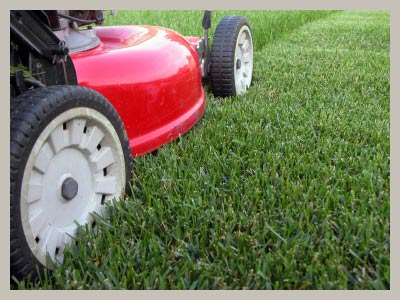Growing
since
1979

FAQ > Lawn:
Mowing Practices:
Proper mowing is essential to the health and appearance of your lawn. Mowing the lawn improperly will increase susceptibility to weeds, insects, disease, and will decrease turf vigor.
Height: Mowing the lawn too short will decrease tolerance to environmental stresses and will also make your lawn slower to recover from disease and pests. The recommended mowing height is 3" during the growing season, but may be lowered to 2" for the first mowing of the year to promote spring green up.
Frequency: Frequency of mowing will vary depending on the growth rate of the turf. Mowing should be frequent enough to ensure that no more than 1/3 of the grass leaf blade is clipped off in a single mowing. If more than 1/3 of the leaf blade is removed in one mowing, you will remove the green material that absorbs sunlight, manufactures food that is stored in the root system. This can cause the turf to go into shock and parts of the deeper root system can die back.
Grasscycling: Grass clippings do not need to be collected when proper mowing practices are used. Collecting lawn clippings removes the valuable nutrients produced by decomposing grass blades and may also reduce the benefits of lawn fertilizer. Collecting grass clippings will not reduce the thatch build up. The primary contributors to thatch accumulation are the roots and below-ground stems.
Mower Blades: Make sure you keep your mower blades sharp, as it makes a clean and even cut. A dull blade will tear the ends of the grass and will leave ragged tips. A dull blade can make your lawn susceptible to a variety of diseases.
A few common practices to avoid:
- Don't mow too fast
- Don't mow when the grass is wet
- Don't mow in the same pattern or direction each time